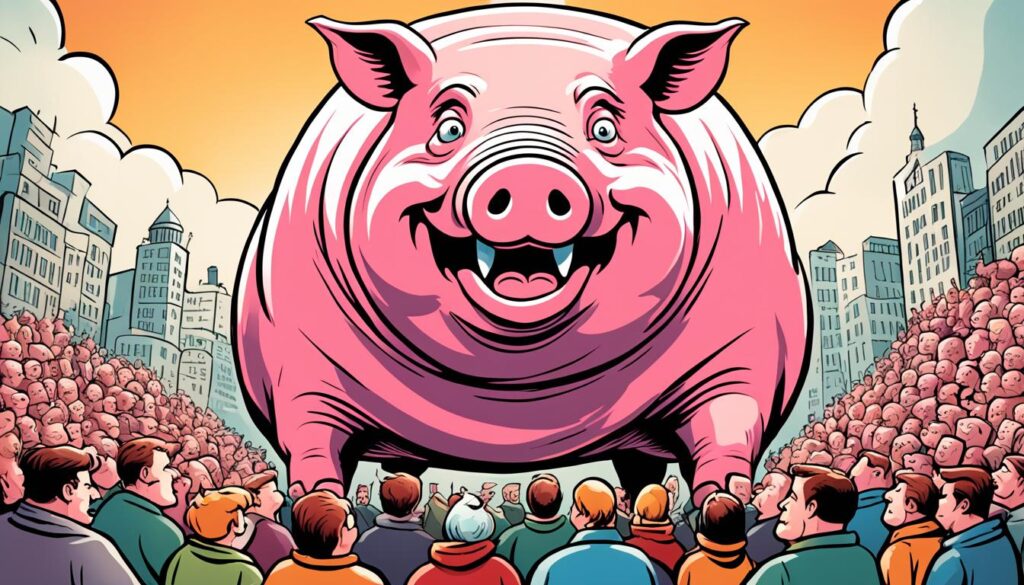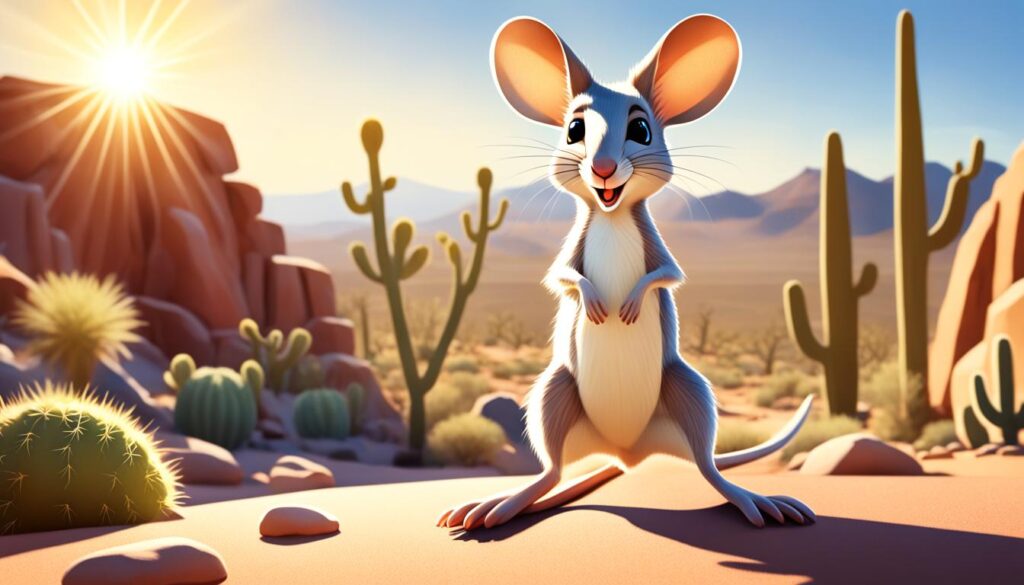Have you ever wondered about your brain’s function or its role as the most fascinating organ? Let’s dive into some mind-blowing facts about your curious mind that will amaze you.
The human brain is160% fat, making it the body’s fattiest organ. Indeed, fat is crucial for a healthy, well-functioning brain, not just a concern for your diet.
Moreover, about186 billion neurons make up your brain. Each one connects with others, creating up to a staggering11 quadrillion connections. Imagine a vast network of highways inside your head, allowing swift information travel.
Brain signals can zip through at up to1350 miles per hour! It’s incredible how fast thoughts and sensations move through your mind.
Interestingly, the spinal cord stops growing by the age of14. Yet, an average adult brain weighs about13 pounds. Such a compact organ significantly influences our lives.
A piece of brain tissue the size of a grain of sand contains1100,000 neurons and11 billion synapses. It’s as if a vast universe exists within the smallest part of your brain.
Consider this: your brain runs on about120 watts of power, similar to a lightbulb. With the same energy needed to light a room, your brain performs complex thinking and processing.
Key Takeaways:
- The human brain is the fattiest organ in the body, composed of 60% fat.
- The brain consists of about 86 billion neurons and forms 1 quadrillion connections.
- Brain information can travel up to 350 miles per hour.
- The spinal cord stops growing at 4 years old, while the adult brain weighs around 3 pounds.
- A piece of brain tissue the size of a grain of sand contains 100,000 neurons and 1 billion synapses.
- The brain operates on about 20 watts of power, equivalent to a lightbulb.
The Quirky English Language
Did you know the English language is packed with unique quirks? From pronunciation to dictionary oddities, it’s always full of surprises. We’ll dive into some of its most fascinating aspects and explore what makes English so peculiar.
Pacific Ocean Pronunciation
Saying “Pacific Ocean” shows off English’s quirky pronunciation. The first ‘c’ sounds like an ‘s,’ the second is a hard ‘ck,’ and the third is ‘sh.’ It’s a clear example of how English pronunciation can be both unique and tricky.
“The word ‘Pacific Saprean’ highlights the language’s idiosyncrasies. The distinct ‘c’ sounds add to its linguistic quirkiness.”2
English also has lots of interesting facts and historical quirks. Here are some:
- English is aviation’s language. All pilots must communicate in English when flying. It’s the global language in the skies.
- The word “girl” used to mean “child” or “young person,” no matter the gender. It now specifically refers to females.
- There are “ghost words” in dictionaries, like “dord.” These are printing errors that were mistakenly listed as real words for a short time.
The quirks of English add to its rich history and global status. Its evolution keeps surprising us with new intricacies.
| Quirky Facts About English | Reference |
|---|---|
| A new word is added to the dictionary every two hours. That’s almost 4,000 new words a year. | 2 |
| English is mandatory for all pilots for communication during flights. | 2 |
| “Girl” once referred to a child or young person of any gender. | 2 |
| Ghost words like “dord” appear in dictionaries due to printing errors. | 2 |
Surprising Apple Varieties
Apples come in many flavors and colors. You know the usual red, yellow, and green ones. Yet, some apples are quite unusual. Take the Black Diamond apple. It has a dark, almost black skin3.
The Black Diamond apple is also called Chinese Red Delicious. It’s part of the Hua Niu family. Inside, it looks like the common Red Delicious. But its dark skin makes it stand out. It catches the eye in fruit bowls and photos4.
But the Black Diamond is not alone. The U.S. grows over 2,500 apple types. Some famous ones are Red Delicious, Fuji, and Granny Smith35.
Apples are tasty and healthy. They have malic acid, good for several conditions like fibromyalgia. Eating apples is a natural way to stay well3.
Apple pie actually comes from England, not America. Most apple types aren’t from North America either. So, apple pie’s origins are British3.
An average apple has a lot of fiber. It has about twice as much as a fiber supplement. Apples are also around 25% air, so they float. Eat an apple for a healthy snack3.
Apples can also help fight cancer. They have beneficial compounds like pectin. These can lower cancer risk. Eating an apple is good for your health3.
Apple trees take time to grow. It can take up to ten years for full fruit production. Think of this when you enjoy your next apple3.
Finding new apple types is fun for fruit lovers. There’s beauty in the Black Diamond apple. There’s also a world of flavors to try and health benefits to enjoy. Next time you’re at the market, look for these special apples. Enjoy their unique taste5.
Butt-Shaped Robots for Durability Testing
Samsung is committed to creating quality phones. They use unique methods to test their phone’s durability. One method includes butt-shaped robots for testing6.
These robots simulate the pressure of sitting on a phone in a back pocket. They repeatedly sit on the phones to test their strength6. The technology behind these robots is advanced. It copies how humans sit and how we distribute our weight6.
This allows Samsung to check how durable their phones are. They can make improvements to ensure their phones satisfy their customers6.
Samsung’s innovative tests show their dedication to quality. Using butt-shaped robots, they prove their phones can handle everyday use. This shows Samsung cares about making reliable products6.

Reference
- 1. Samsung phone durability testing with butt-shaped robots
The World’s Largest Pig
When we think of pigs, many of us remember Wilbur from Charlotte’s Web. Or maybe a regular farm pig that weighs a couple of hundred pounds. But some pigs are huge. In Southern China, a farm breeds giant pigs. One of these pigs weighs as much as a polar bear, coming in at 1,102 pounds7. This huge pig shows just how diverse the pig species can be. It also highlights nature’s ability to amaze us.
The size of this giant pig isn’t just impressive; it also grabs people’s attention. It’s rare to see such a large creature. This pig comes from special breeding to be this enormous. These big pigs have a special role in farming. Soon, this huge pig will be sold. It may bring in around $1,400 because of its size7. People want these giant pigs for unique culinary experiences.

Seeing a giant pig is exciting and new. But pigs are fascinating for more reasons than their size. For example, baby pigs can know their names by two weeks old8. This shows their smartness early in life.
Pigs can do more than you might think. Did you know adult pigs can run up to 11mph? That’s as fast as running a seven-minute mile8. Pigs can also make more than 20 different sounds to talk to each other8. These facts give us a new view of pigs.
Pigs can eat almost anything, even human bones8. This means they can live in many places. Their diet shows how versatile they are.
Pigs like being close to each other. They sleep nose-to-nose and can dream8. They form strong bonds with each other. Pigs and humans are quite similar genetically. This makes pigs valuable in medical research8. We learn from them to fight diseases.
In some cultures, pigs symbolize fertility and strength. Chinese people, for example, use pig statues to promote these values8. This shows how deeply animals are woven into human cultures.
There are also pigs that love to swim. On Big Major Cay in the Bahamas, pigs swim in the sea and visit boats for snacks8. These pigs show the surprising sides of animal behavior.
| Key Facts about Giant Pigs | Reference |
|---|---|
| The world’s heaviest pig, Tennessee’s Big Bill in 1933, weighed a record-breaking 2,552 pounds | 7 |
| Pigs usually weigh between 300 to 700 pounds when fully grown | 7 |
| Pigs can give birth to ten piglets per year and usually have two litters annually | 7 |
Hole-in-One Insurance for Golfers
Hole-in-one insurance isn’t only for pros. About four million golfers in Japan have it. They use it to party after making a hole-in-one without stressing over costs. Let’s look more into this unique insurance9.
This insurance helps cover party expenses for the golfer’s big moment. It includes food, drinks, and gifts. In Japan, amateur golfers usually spend about $65 yearly on this9.
So, what are your chances of making a hole-in-one? For pros, it’s 3,000 to 1. For amateurs, it jumps to 12,500 to 1. And making two in one game? That’s an incredible 67 million to 1. These numbers show how rare and special a hole-in-one really is9.
Hole-in-one insurance makes golf events more fun. It lets organizers offer big prizes for making a hole-in-one. Picture the joy when someone lands that perfect shot and wins big, all thanks to this insurance10.
Golf is full of amazing moments. Like when Fred Couples scored 60 at age 63. It was during a PGA Tour Champions tournament in 2022. This round was the highlight of his career, showing the magic of matching your score to your age9.
There’s even golf history on the moon. Astronaut Alan Shepard took a swing there during Apollo 14. He hit balls on the moon with a special 6-iron, marking a cool moment in golf lore9.
In Iceland, golf is big. With 65 golf courses for only 388,000 people, there’s 1 course for every 6,000 residents. This shows Iceland’s huge love for the game and its effort to keep golfers happy9.
Golf offers more than just a game. It has hole-in-one insurance, remarkable feats, and unique experiences. It’s a world waiting for both new and experienced players. Next time you play, think of all the wonders of golf there are to discover9!

The Unique Cucamelon
Have you ever heard of a cucamelon? They’re tiny, grape-sized fruits that look like little watermelons. Inside, they taste like cucumbers with a touch of citrus. Enjoy them raw, in salads, salsa, or pickled.
The cucamelons are garden champs, growing quickly to over 9 feet tall in less than a month11. These tangy treats from Mexico are about 1 inch long11. They’re sparking creativity in drinks, like the Cucamelon Gin and Tonic11.
While cucamelons thrived, the garden battled slugs. Beer traps and handpicking kept the slugs under control11. Sadly, zucchini and French Melons suffered from mildew, cutting down their yield11. Slugs also ruined herbs like parsley and basil11. Weak sunflowers needed extra help to stand tall11.
The cucamelon garden was smartly designed using the square foot method12. Every bed was 3.5ft by 6.5ft, offering 22 square feet of growing space12. Vines like cucumbers and peas grew on trellises to save space12. Companion planting helped manage sunlight and space12. Beds were placed based on how the sun hit the yard12.
Interested in something new for your garden or kitchen? Try cucamelons for their unique taste and fun uses. They’re sure to brighten up any dish or garden with their adorable appearance and delightful taste!
The Size of Canada and Walt Disney World
Canada is huge, ranking as the second-largest country in the world. It covers thousands of miles from coast to coast. With its massive size, it easily overshadows Walt Disney World13.
Walt Disney World Resort in Florida is a favorite among theme parks worldwide. It covers more than 40 square miles. However, it’s tiny when you compare it to Canada14.
Disneyland in California is different from Walt Disney World in Florida. While Walt Disney World offers unique experiences, Disneyland has its own special attractions15.
To show how big Canada is, think about this: Walt Disney World could fit inside it 81,975 times. That shows how much land Canada has13.
Canada’s size adds to the beauty of its landscapes. You can see the Rocky Mountains, vast forests, and beautiful coastlines. Each place offers stunning views13.
Walt Disney World is magical, but it’s tiny next to Canada’s vastness. This difference highlights Canada’s size and natural wonders14.

Canada is amazing with endless landscapes to explore. Whether you love Walt Disney World or the hugeness of Canada, both are breathtaking15.
| Canada | Walt Disney World |
|---|---|
| Second-largest country in the world | Covers over 40 square miles |
| Encompasses diverse landscapes and natural wonders | Distinct from Disneyland in California |
| Only a fraction of the size of Canada | |
| Immersive experiences and beloved attractions | |
| Part of the renowned Disney franchise | |
| A magical destination for families |
Whether you are drawn to Walt Disney World or Canada’s vastness, both create unforgettable memories. Both the magic of Disney and the beauty of Canada offer amazing experiences151413.
Survival Skills of the Kangaroo Mouse
The Nevada desert is home to the kangaroo mouse, a creature with amazing survival skills. It lives in a place with little water, yet it does not need much to drink. The secret is in the seeds it eats, which give it all the water it needs16.
This mouse doesn’t just rely on any water source. It gets its moisture directly from the seeds it eats. This special skill helps it live in the dry Nevada desert16.
Its ability to get water from seeds shows how smart nature can be. The kangaroo mouse can stay alive in the desert, thanks to this skill. Nature has many ways to help animals survive, and this mouse is a great example16.
We can learn a lot from the kangaroo mouse about adapting to tough situations. It shows us how resilient nature can be. The way it gets water from seeds is just one cool thing animals do to live16.

The Kangaroo Mouse: A Desert Adaptation
The kangaroo mouse stands out because it can live on seeds alone. Water is hard to find in its desert home. Yet, this mouse has evolved to pull moisture from seeds, skipping the need for lakes or rivers16.
Its digestive system is key to this process, letting it hydrate with minimal water loss. In a place where water is scarce, this trick is crucial for its survival16.
This ability of the kangaroo mouse is fascinating, showing how animals adapt to tough environments. It’s a strong example of nature’s ingenuity and how different creatures face their own set of challenges16.
| Survival Skills of the Kangaroo Mouse | |
|---|---|
| Kangaroos cause about 90% of vehicle and animal-related accidents in Australia. | 16 |
| Eastern grey kangaroos can grow up to 7 ft (2.1 meters) tall and weigh about 120 pounds (54 kg). | 16 |
| Kangaroos can accelerate their hops from 21–26 km/h (13–16 mph) to 71 km/h (44 mph). | 16 |
| Red Kangaroos, the largest living marsupials, can grow as tall as 6 ft (2 meters) and live up to 23 years. | 16 |
| Australia recorded a kangaroo population of 44 million in 2015, surpassing the human population of 24 million. | 16 |
| Kangaroos have a gestation period lasting 4 to 5 weeks. | 16 |
| Only alpha male kangaroos can mate with female kangaroos within a group. | 16 |
| Red Kangaroos use their powerful hind legs to accelerate hopping speeds up to 35 mph. | 16 |
| Joeys leave their mother’s pouch to graze on grass or small vegetation after 4 to 6 months. | 16 |
Effects of Isolation in Antarctica
Antarctica, at the bottom of the world, is incredibly isolated and harsh. It has always caught the attention of Antarctic expeditioners. They are drawn to its stunning views and unique animals. They have also found how isolation affects our minds there.
A study on Antarctic expeditioners showed isolation changes our brains. Using advanced scans, they saw decreases in certain brain areas, like the hippocampal dentate gyrus. This means our brains adjust to being alone and having little change in our surroundings17.
Life in Antarctica changes how the brain works and looks. The tough conditions and few people to talk to test our mental resilience17.
Antarctica is huge, covering 14.2 million square kilometers (5.5 million square miles). Most of it, 98%, is ice. This ice makes up 90% of the Earth’s total and 70% of our fresh water17. If all this ice melted, the sea would rise about 60 meters (200 feet)17.
The Antarctic ice sheet stores most of the world’s fresh water, around 60-90%17. Thinking about this vast ice and its role in our climate and water is amazing. Antarctica’s isolation makes it vital for science and discovery17.
Not just humans, but animals too are shaped by Antarctica’s isolation. The sea life there has been on its own for millions of years18. Creatures underneath the ice have evolved differently, adapting to this unforgiving place18.
| Statistics about Antarctica | Reference |
|---|---|
| At least 15 species of whales are commonly found in Antarctic waters. | 19 |
| Antarctica is home to at least 45 species of birds, with one endemic to the continent. | 19 |
| There are over 2,600 peaks in Antarctica, making it a continent with spectacular mountains. | 19 |
| The Deception Island in Antarctica is known for having hot springs, making it a unique destination. | 19 |
| Weddell Sea has been noted to have the clearest waters of any sea on Earth. | 19 |
| Antarctica has sixteen research stations within the Shetland Islands. | 19 |
Antarctica’s far-off location and its severe isolation help scientists study unique life forms. It helps us learn about isolation’s effects on minds and animals. Exploring it helps us know more about our planet171819.

The Truth About Hansel and Gretel
In 1963, German artist Hans Traxler wrote a book titled “The Truth About Hansel and Gretel.” He claimed the famous siblings were real and had committed a crime. This story caused a big stir. Newspapers even wondered if it was an old criminal case20.
However, it’s crucial to remember that Hansel and Gretel’s tale is a famous German fairy tale. The Grimm Brothers published it around 1812. Today, it’s still loved by children worldwide for its exciting adventures and lessons20.
Over time, Hansel and Gretel’s story has seen many adaptations. These include books, movies, and plays. They usually show the witch as the main villain. The story highlights the importance of bravery and overcoming tough situations2021.
More recently, a new version came out from an author named Enola. In it, Gretel is an American Indian healer named Enola. This story talks about loss, the impact of settlers on native lands, and racism. It adds cultural details that highlight Enola’s background and the effects of colonization20.
Themes like racism, hate, and surviving under harsh rule are central. Enola lives away from society to avoid colonizers. This shows the strength of native people throughout history20.
Enola’s life as a healer and survivor in nature is explored. It portrays the toughness needed to live in a challenging world. Enola’s experience invites us to think about who we are, our heritage, and the power of stories20.
The “Hansel and Gretel” story and its different versions connect with people of all ages. It combines action, magic, and finding oneself. This makes it rememberable and interesting for everyone202221.
| Statistical Data | Source |
|---|---|
| The original “Hansel and Gretel” fairy tale was published by the Grimm Brothers around 1811. | 20 |
| The story of “Hansel and Gretel” is of German origin and remains popular worldwide among children. | 20 |
| The story has been adapted multiple times across various mediums, typically portraying the witch as the villain. | 2021 |
| Enola, referred to in the re-write, is depicted as an American Indian healer. | 20 |
| Enola’s story reflects displacement, postcolonial themes, racism, and the impact of colonizers on indigenous tribes. | 20 |
| The re-write integrates cultural elements to showcase Enola’s background and the effects of colonization. | 20 |
| Themes of racism, hatred, and survival under colonization are prevalent in the retelling of the story. | 20 |
| Enola chooses isolation in nature to escape persecution by colonizers. | 20 |
| Enola’s lifestyle as a healer and survivor in the wilderness is emphasized in the re-write. | 20 |
| Between 2010 and 2015, there was a surge in significant new books related to fairy tales, including the first English translation of the Grimm brothers’ original 1812 Kinder- und Haus-Märchen. | 22 |
| In 2015, Jack Zipes released a new scholarly volume called “Grimm Legacies: The Magic Spell of Grimm’s Folk and Fairy Tales.” | 22 |
| Marina Warner’s book “Once Upon a Time: A Short History of Fairy Tale” was also published in the previous year. | 22 |
The love for “Hansel and Gretel” endures due to its universal themes and engaging tale. It draws in readers from all walks of life, across generations. The story’s adaptability shows why it remains significant in literature2021.

Conclusion
Ignite your curiosity with these amazing facts. They will amaze you and make you want to learn more. The world is full of wonder with much to discover.
Did you know 72% of Gen Z spends their social media time watching videos23? Or that people have about 13 secrets on average23? Learning never stops, leading to amazing finds.
Delve into the unknown with “Jordan Moore’s Interesting Facts for Curious Minds.”24 It has 1572 facts on various topics. Learn about historical events and the mysteries of the universe.
Discover that Earth has about 1 trillion trees, more than the stars in the Milky Way25. There’s a vast diversity of life, from oceans to bacteria. Explore pop culture and historical figures too24.
FAQ
What topics do the mind-blowing curious mind facts cover?
Can you provide an example of a quirky aspect of the English language?
Are there any unique apple varieties?
Do butt-shaped robots really exist for durability testing?
Is there really a pig that weighs as much as a polar bear?
FAQ
What topics do the mind-blowing curious mind facts cover?
Our facts explore many topics, from animals and biology to geography and space. There’s much to learn!
Can you provide an example of a quirky aspect of the English language?
Certainly! Take “Pacific Ocean.” It says the ‘c’ three ways: as ‘s,’ ‘ck,’ and ‘sh.’ It shows how quirky English can be.
Are there any unique apple varieties?
Yes, like the Black Diamond apple. It’s part of the Hua Niu apple family and looks black outside. Inside, it’s just like a Red Delicious apple.
Do butt-shaped robots really exist for durability testing?
Indeed, they do. Samsung uses butt-shaped robots to test phone durability. They mimic how phones bend when sat on in a pocket.
Is there really a pig that weighs as much as a polar bear?
Yes, in China, a pig weighs as much as a polar bear, at 1,102 pounds. This giant pig sells for about
FAQ
What topics do the mind-blowing curious mind facts cover?
Our facts explore many topics, from animals and biology to geography and space. There’s much to learn!
Can you provide an example of a quirky aspect of the English language?
Certainly! Take “Pacific Ocean.” It says the ‘c’ three ways: as ‘s,’ ‘ck,’ and ‘sh.’ It shows how quirky English can be.
Are there any unique apple varieties?
Yes, like the Black Diamond apple. It’s part of the Hua Niu apple family and looks black outside. Inside, it’s just like a Red Delicious apple.
Do butt-shaped robots really exist for durability testing?
Indeed, they do. Samsung uses butt-shaped robots to test phone durability. They mimic how phones bend when sat on in a pocket.
Is there really a pig that weighs as much as a polar bear?
Yes, in China, a pig weighs as much as a polar bear, at 1,102 pounds. This giant pig sells for about $1,400 for its meat.
What is hole-in-one insurance for golfers?
It’s insurance that covers hole-in-one celebration costs. Around four million Japanese golfers have it. It helps with food, drinks, and gifts costs, costing about $65 a year.
What are cucamelons?
Cucamelons look like tiny watermelons but taste like cucumbers with lemon zest. They’re great raw, in salads, salsa, or pickled.
How big is Canada compared to Walt Disney World?
Canada is huge, the second-largest country. Walt Disney World could fit inside it over 81,975 times. The size difference is amazing!
How does the kangaroo mouse survive in the desert without drinking water?
The kangaroo mouse lives in Nevada’s desert. It doesn’t need to drink water because it gets all its hydration from seeds.
Can isolation in Antarctica impact the brain?
Studies on Antarctica’s explorers show isolation impacts the brain. Brain scans show changes, suggesting isolation affects our minds.
Did a German artist really claim that Hansel and Gretel were real and had committed murder?
In 1963, Hans Traxler wrote “The Truth About Hansel and Gretel,” saying they were real killers. It shocked many and made headlines.
Where can I find more mind-blowing curious mind facts?
Check our collection for more mind-blowing facts. The world is packed with wonders to discover. So, keep learning and feeding your curiosity!
,400 for its meat.
What is hole-in-one insurance for golfers?
It’s insurance that covers hole-in-one celebration costs. Around four million Japanese golfers have it. It helps with food, drinks, and gifts costs, costing about a year.
What are cucamelons?
Cucamelons look like tiny watermelons but taste like cucumbers with lemon zest. They’re great raw, in salads, salsa, or pickled.
How big is Canada compared to Walt Disney World?
Canada is huge, the second-largest country. Walt Disney World could fit inside it over 81,975 times. The size difference is amazing!
How does the kangaroo mouse survive in the desert without drinking water?
The kangaroo mouse lives in Nevada’s desert. It doesn’t need to drink water because it gets all its hydration from seeds.
Can isolation in Antarctica impact the brain?
Studies on Antarctica’s explorers show isolation impacts the brain. Brain scans show changes, suggesting isolation affects our minds.
Did a German artist really claim that Hansel and Gretel were real and had committed murder?
In 1963, Hans Traxler wrote “The Truth About Hansel and Gretel,” saying they were real killers. It shocked many and made headlines.
Where can I find more mind-blowing curious mind facts?
Check our collection for more mind-blowing facts. The world is packed with wonders to discover. So, keep learning and feeding your curiosity!









